Dutch-Japanese relations have a long and interesting history, determined by commerce, trade, and war. Here’s a glimpse into the 400 years the Netherlands and Japan share. 🇳🇱🇯🇵
For much of its history, Japan was a relatively isolated country. Whoever dared to invade had to put up with a civilisation that would not give in easily (we’re looking at you, Mongolians).
Yet one day, the Japanese made contact with European civilisation through none other than the sea-faring, spice-stealing, brood-eating Dutch.
Well, technically, the Portuguese had made the first contact with Japan, but their relationship with the Dutch proved to be the enduring one.
First contact
The first ship to come to Japan from the Netherlands set sail from Rotterdam in 1598. Sailing alongside four other ships, which were all sunk on the way, it arrived in Japan on April 19, 1600. 🚢
The ship, affectionately called Liefde (love), lay anchor in the port of Sashifu. Its strange appearance attracted the attention of the Japanese, especially their military leader (referred to as Shogun), Tokugawa Ieyasu.
And what was there not to love? The ship had big cannons, fire arrows, and many rifles, just ripe for the taking. And so, everything was taken, including the Englishman William Adams and the Dutchie Jan Joosten van Lodensteyn.
The two men were interrogated with the help of a Portuguese translator. However, their witty remarks quickly won their popularity with the Shogun, and he eventually invited them to the court to teach various skills, from cartography to war and shipbuilding.
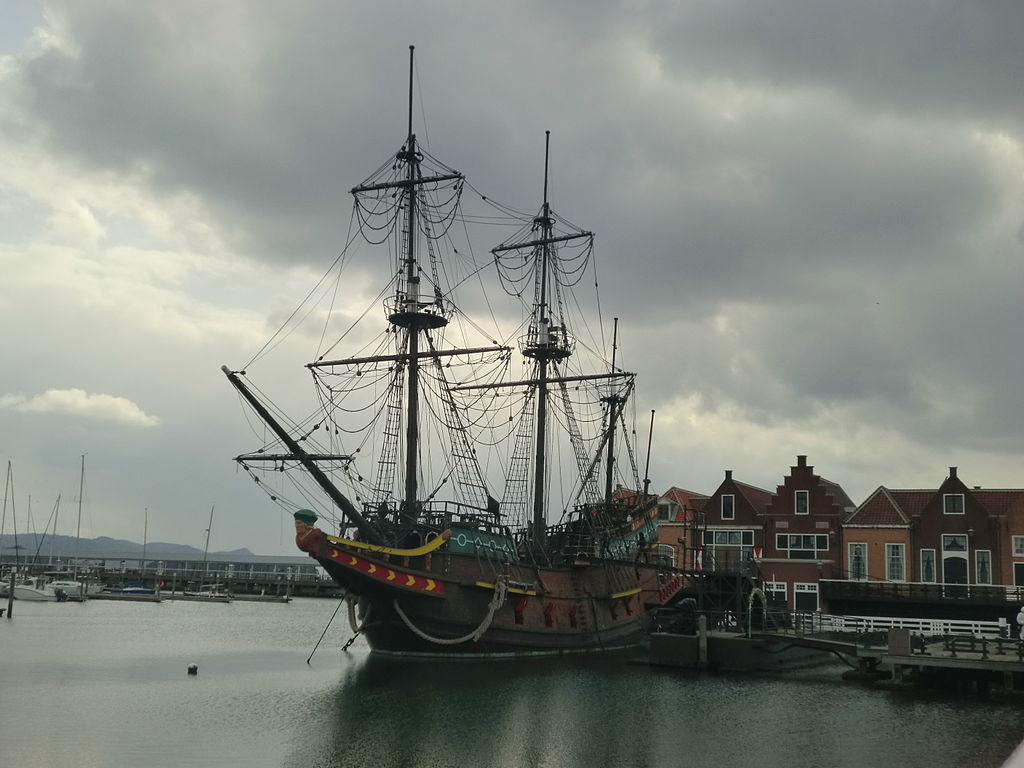
The popularity of the two outsiders grew further. They were given lands and titles and settled down with local women. This laid down the foundation of Dutch-Japanese relations.
The Shogun disliked the Portuguese, who came by not only with trade but also with pesky missionaries who went around spreading the gospel of Jesus — a move that turned out to be very unpopular with the Shogun.
As such, the Dutch, with their rational Protestant values, wanting nothing more than some good ol’ trading, proved to be a much more appropriate option as long-term trading partners. 👯
Dutch-Japanese: a match made in the seas
The Shogun bestowed on the Dutch a trading permit — great news, as the Dutch had just founded the infamous Dutch East India Company (VOC). This gave the newly-founded company a new foreign trading partner to conduct commerce with.
The VOC (founded in 1602) managed to obtain a permit to trade with all the shipping ports of Japan and opened the first trading post in Hirado in 1609.
READ MORE | What was the VOC? The Dutch East India Company explained
This early trade period was not very profitable for the Dutch as they didn’t yet have many VOC trading posts they would establish later. Competition with the Portuguese also meant that conflict was on the horizon.
The Shogun was unhappy with the fighting between these two foreign powers and gradually restricted access and trade.
But the biggest issue that the military leader had was Christianity.

The Japanese decided to build an island called Dejima for the Portuguese to limit their access to the country.
However, the Portuguese didn’t last very long and were completely kicked out of the country because they suspected they supported Christian rebels during the Shimabara revolt.
The Dutch were then moved to Dejima after committing an honest mistake: they built a stone warehouse and inscribed the date of its foundation as “Anno 1640”.
As it was established that Christianity was not really popular with the Japanese, writing about the year since the birth of Jesus turned out to cause quite some anger with the Shogun.
After this incident, the Dutch were restricted to trade only from Dejima, starting a new chapter in their trading history.
Western knowledge in Japan
For the subsequent 200 years, between 1641 and 1853, the Dutch were the only Western power allowed to trade with Japan, becoming the gate to the outside world for the Japanese — especially through the VOC.
Western science spread to Japan through the port in Dejima, with the Japanese term rangaku (Dutch learning) being used to describe this phenomenon.
In its early stages, the process developed quite slowly. Every year, the Dutch would visit the Shogun, bringing with them the world news and different kinds of novelties as gifts.
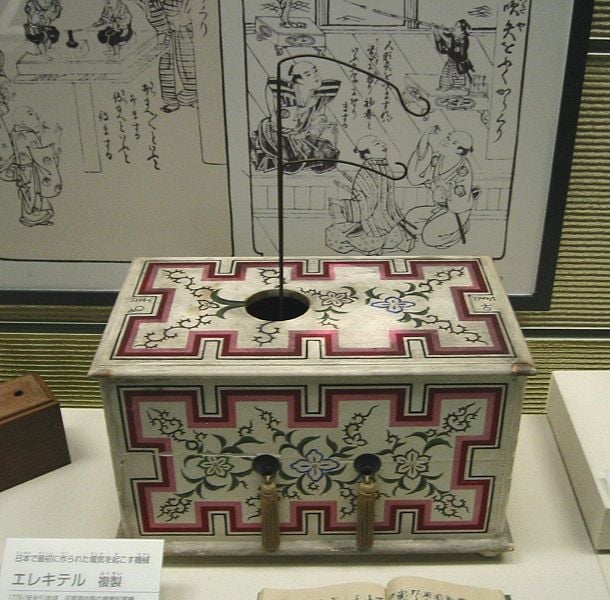
Eventually, the Dutch were allowed to conduct private trade in Dejima, leading to a flourishing market, which highly benefited employees of the VOC.
After opening a surgeon’s post on the island, high-ranking Japanese officials would come for treatment when their local doctors failed.
A well-known foreign doctor at the time was the German-born Caspar Schamberger, who brought with him knowledge of treatments, medicine, and medical books.
The Japanese elite sought not only treatment but ordered all sorts of novelties through the Dutch, ranging from microscopes, oil paintings, telescopes, maps and even animals, such as donkeys and birds.
Through the VOC, the Dutch brought many more academics to Dejima, another famous figure being the physician Philipp Franz von Siebold. He opened a medical school near Nagasaki and further developed medical knowledge and treatments in the area.
He also had a child with a Japanese woman and, in true European fashion, stole tea plants from Japan and smuggled them to Batavia, the then capital of the Dutch East Indies.
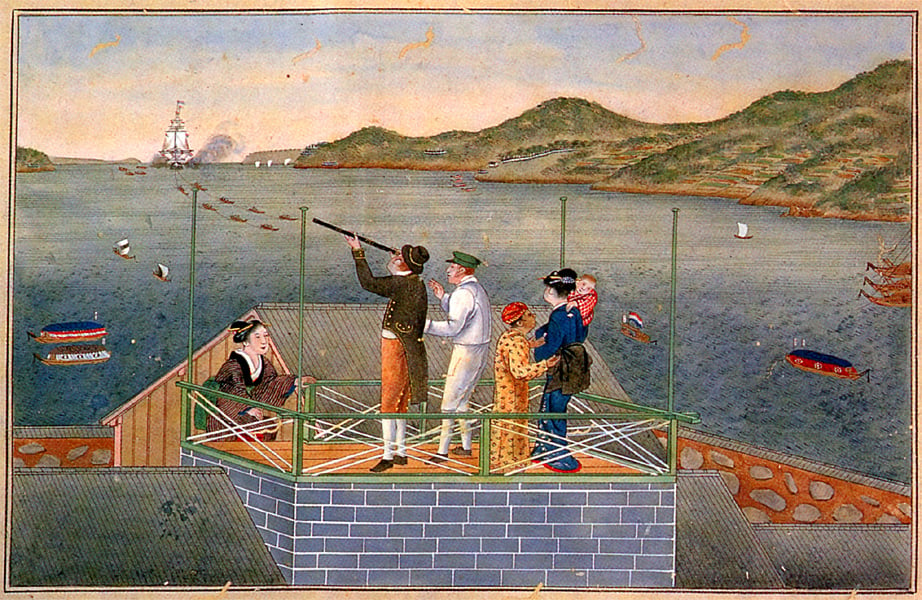
Siebold also sent shipments of Japanese cultural and botanical artefacts back to Europe. On a visit to the Shogun, he illegally received maps of Japan from a court member.
Seibold was caught and exiled from Japan — leaving his lover and daughter behind. He eventually settled in Leiden, and today, you can find his entire collection of artefacts brought from Japan in the Sieboldhuis on Rapenburg.
Knock knock, it’s the United States (and modernity)
Compared to most of its nearby neighbours, Japan had successfully managed to navigate upholding its culture and traditions while maintaining some contact with the outside world through the Dutch and the VOC.
However, this all changed on one faithful day in July 1853.
Why? Ah yes, the United States arrived (we’ve heard this story many times before 😬). Surprisingly, they were not looking for oil, just for some trade deals. Aggressive ones at that, but still trade deals.
Arriving with battleships in Tokyo Bay, the Americans forced Japan to open up the country and allow foreign trade with multiple countries.
This was bad news for the Dutch, as they lost their exclusive friendship with Japan.
But just like two old childhood friends who get separated by adulthood and responsibilities, the Dutch-Japanese relations managed to survive somehow, probably thanks to the telegraph. ✉️
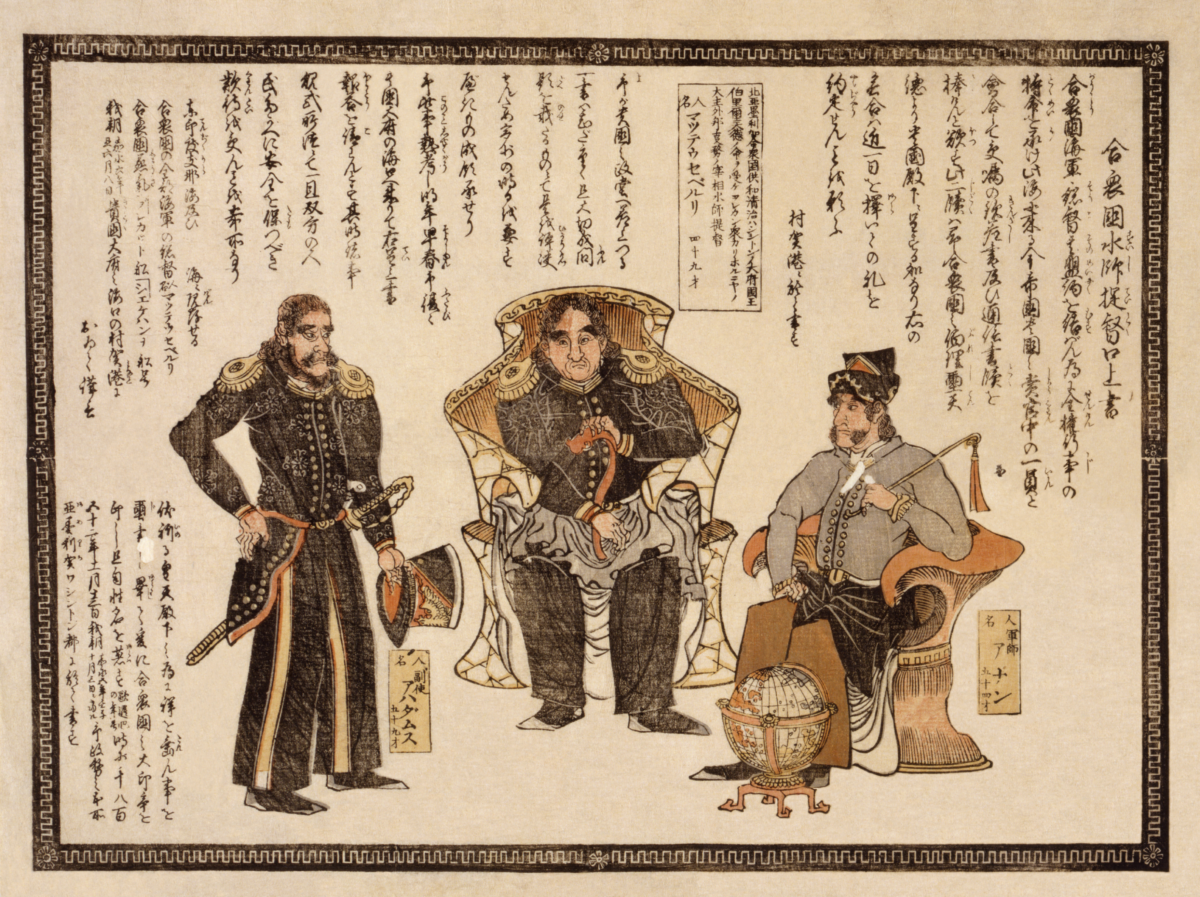
Over the next 50 years, Japan rapidly modernised, transforming itself from a feudal society to a full-fledged 19th-century Western democracy.
What we mean by that is that it had an appetite to conquer everything around it, like true Europeans (more on that later). The Japanese invited the Dutch to do some classic Dutch engineering, helping construct floodgates in areas prone to flooding.
Honourable mentions of Dutch engineers go to G.A Escher, the father of the famous Dutch artist M.C Escher, and Johannis de Rijke, who did such a darn good job that he became Vice-minister of Japan.
The Japanese also sent some of their scholars to the Netherlands in exchange and finally formalised their long friendship by opening a Dutch consulate in Yokohama in 1859. 🤗
A nasty divorce of Dutch-Japanese relations: World War II
As mentioned before, Japan was inspired by Western ideas of conquest and wanted to try it out.
Japan was trying to conquer the entire Far East, and guess what country happened to be in the area? Yes — it was Indonesia, which also happened to be a Dutch colony.
Not one to forego ambitions over friends, the Japanese invaded Indonesia in 1942 and maintained control over the region until WWII ended in 1945.
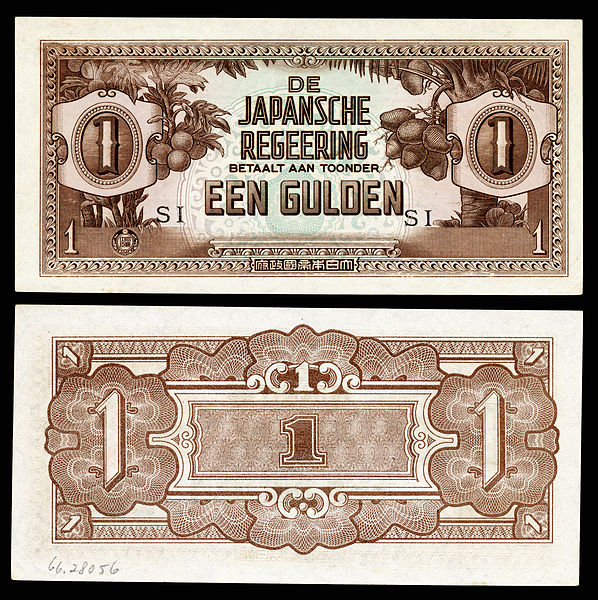
Initially, the Dutch elite ruling the country expected to be allowed to maintain their positions of power. To their surprise, they were sent to detention camps while the Japanese Army started to train local Indonesians, inspiring nationalist ideas.
This proved crucial in the Indonesian independence process, as it upset the established colonial order.
By 1949, the Dutch had no choice but to accept Indonesian sovereignty (not before a bitter conflict that lasted almost five years). Not surprisingly, WWII proved to be the biggest break in Dutch-Japanese relations, and it took some time for them to reach a level of normality.
Post-war relations
The Dutch no longer had a special place in Japan, and the war worsened things. Yet, in the decades following the war, the countries slowly found their way back to each other. One of the most notable events was the opening of the “Holland Village” in 1983, close to Nagasaki.
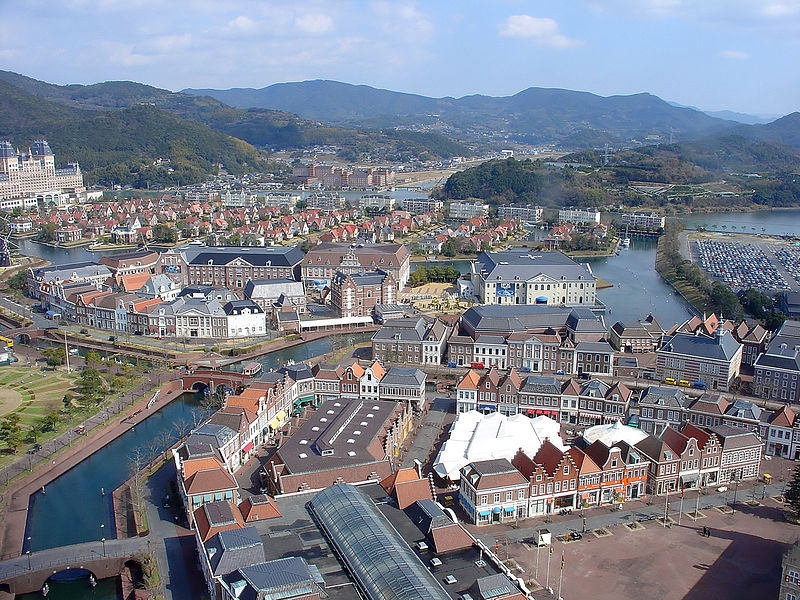
A recreation of an actual Dutch village, the project was such a success that it was extended to “Huis ten Bosch“, which opened in 1993. 🇳🇱
READ MORE | 8 carbon copies of the Netherlands across the world
There’s everything you’d expect in a Dutch village — windmills, wooden clogs, and Gouda cheese. There’s even a recreation of the Liefde ship, the first to arrive in Japan 400 years ago. And so, the relationship between these two countries has reached a full circle. 🤝
Dutch-Japanese relations at the Sieboldhuis
You can also glimpse the 400-year-long Dutch-Japanese relations at the Sieboldhuis in Leiden — a museum hosting the entire collection of Philipp Franz von Siebold.
It contains a lot of artefacts from the day-to-day life of the Japanese at the time, and while the collection obviously has some Western colonial quirks, it’s still worthwhile to get a glimpse of Japanese society at the time and its relationship with the country of the lowlands.
Have you ever been to Japan, and if so, did you feel the mark of the relations between these two countries? Let us know in the comments!
Feature Image: Kawahara Keiga/ MIT Visualising Cultures/Wikimedia Commons/Public domain





We have been to Japan at least 15 times and have traveled to many out of the way places. It’s wonderful country with so much history. Tokyo is one of our favorite cities. We plan to see “Holland Village” on our next trip. The Netherlands in Japanese is “オランダ” or “Oranda.” Thank you for this terrific article. It saves me from writing it. It was on my list.
Please, there is a difference between “fateful” and “faithful”.